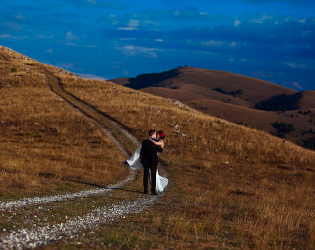Sextantio Albergo Diffuso Est. 2005
Santo Stefano di Sessanio, Province of L'Aquila, Italy
- A/V Equipment
- Bridal Suite/Changing Rooms Onsite
- Street Parking
- Valet Parking
- Wifi
- Ample Parking Onsite
- Dining Chairs
- Dining Tables
- Onsite Restrooms
THIS VENUE DOES NOT HAVE ANY REPORTS AT THIS TIME.
Check back again soon!

Beautiful backdrop for wedding photos.
- Photographer: Iconoclash Photography

The signs of past dwelling lifestyle are still visible on the stone floors and recuperated terracotta pavements.
- Photographer: Iconoclash Photography

Albergo diffuso in a fortified medieval village in Abruzzo.
- Photographer: Iconoclash Photography

Sextantio Albergo Diffuso creates a unique setting for special events.
- Photographer: Iconoclash Photography

Event Planning: Chic Weddings in Italy | Floral Design: Floran
- Photographer: Iconoclash Photography

Event Planning: Chic Weddings in Italy
- Photographer: Iconoclash Photography

Event Planning: Chic Weddings in Italy
- Photographer: Iconoclash Photography

- Photographer: Iconoclash Photography

Event Planning: Chic Weddings in Italy | Floral Design: Floran
- Photographer: Iconoclash Photography

Event Planning: Chic Weddings in Italy | Floral Design: Floran
- Photographer: Iconoclash Photography

- Photographer: Iconoclash Photography

Each room is equipped with a wool mattress placed on a wooden plank which is based on a wrought iron structure.
- Photographer: Courtesy of Sextantio Albergo Diffuso

Second floor room, Muro
- Photographer: Courtesy of Sextantio Albergo Diffuso

Located at the highest point of the noble palace overlooking Piazza Medicea, this bedroom has slanted ceilings welcoming guests with its intimate and warm atmosphere of yesteryear.
- Photographer: Courtesy of Sextantio Albergo Diffuso

A charming room, suffused with an atmosphere vaguely reminiscent of a severe and austere convent cell, yet incredibly warm and welcoming.
- Photographer: Courtesy of Sextantio Albergo Diffuso

Bedroom on the first floor with bathroom hidden behind a wall and equipped with shower.
- Photographer: Courtesy of Sextantio Albergo Diffuso

Cozy up by the fireplace.
- Photographer: Courtesy of Sextantio Albergo Diffuso

The dining room, located in the century-old mill “Opificio Sotto Gli Archi” develops on two levels connected by a stone staircase.
- Photographer: Courtesy of Sextantio Albergo Diffuso

- Photographer: Courtesy of Sextantio Albergo Diffuso

- Photographer: Courtesy of Sextantio Albergo Diffuso

- Photographer: Courtesy of Sextantio Albergo Diffuso

- Photographer: Courtesy of Sextantio Albergo Diffuso

- Photographer: Courtesy of Sextantio Albergo Diffuso

- Photographer: Courtesy of Sextantio Albergo Diffuso

- Photographer: Courtesy of Sextantio Albergo Diffuso

- Photographer: Courtesy of Sextantio Albergo Diffuso

- Photographer: Courtesy of Sextantio Albergo Diffuso

- Photographer: Courtesy of Sextantio Albergo Diffuso

- Photographer: Courtesy of Sextantio Albergo Diffuso

- Photographer: Courtesy of Sextantio Albergo Diffuso

- Photographer: Courtesy of Sextantio Albergo Diffuso

- Photographer: Courtesy of Sextantio Albergo Diffuso

































 unlock to view pricing
unlock to view pricing





